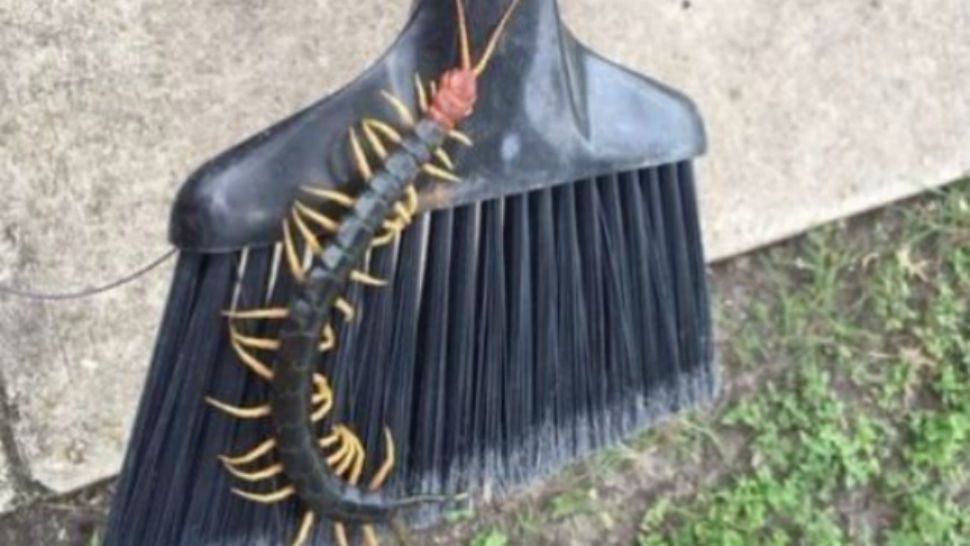STATEWIDE — Everything’s bigger in Texas, and the bugs are no exception.
Maybe you've experienced the sting of a fire ant or perhaps you've received a slap to the face by a flying palmetto bug, but believe us when we say this: You do not want to come into contact with the five following bugs. And if you do, steer as clear as you possibly can.
While the adage, "if you leave them alone, they'll leave you alone," is true of most of these creepy crawlers, it's best not to flirt with disaster.
So here they are. Oh, and while these are the five creepiest we could find, know that there are 100,000 or so species of insects native to the United States, and more than 1/3 of these have been found in Texas.
1) Asp Caterpillar (Megalopyge opercularis)
This caterpillar is the larval stage of the Southern Flannel Moth. It can be found in oaks, elms, and many other garden plants such as roses and ivy. The caterpillar is coated and appears deceivingly soft, but contains stinging venomous spines. Exposure to the spines results in immediate skin irritation in a grid-like pattern and severe, radiating pain that might last for several hours. Medical treatment is not usually necessary.

2) Eastern Velvet Ant (Dasymutilla occidentalis)
The velvet ant is a species of parasitioid wasp named for their bright, velvety appearance. The females are wingless and commonly mistaken for a member of the true ant family. Females are capable of an extremely painful sting but medical intervention is rarely required.
 Eastern Velvet Ant (female). Judy Gallagher/Flickr
Eastern Velvet Ant (female). Judy Gallagher/Flickr
3) Texas Redheaded Centipede (Scolopendra heros)
The Texas Redheaded Centipede can reach up to 8 inches in length and occurs in the southwestern United States and northern Mexico. It is a nocturnal predator that feeds mostly on other invertebrates. For humans, a bite from S. heros usually causes sharp, local pain and swelling, and have occasionally been known to cause nausea, headache, and skin necrosis.
Texas-sized centipede at Garner State Park pic.twitter.com/WGUu91VVEY
— Texas State Parks (@TPWDparks) July 1, 2015
4) Brown Recluse (Loxosceles reclusa)
The brown recluse spider is rarely aggressive (hence its name), and bites are uncommon. The bite frequently is not felt initially and may not be immediately painful, but it can be serious. The brown recluse possesses a hemotoxic venom. Most bites are minor, however, a small number of brown recluse bites do result in necrosis. It is now known that many other necrotic conditions have been incorrectly blamed on spider bites in the past, adding to this spider’s bad reputation.
 Brown recluse spider. Mike Keeling/Flickr
Brown recluse spider. Mike Keeling/Flickr
5) Spider Wasp, aka: Tarantula Hawk (Pompilidae)
The spider wasps can exceed 2 inches in length. Most are 0.4 to 1 inch long. While the wasp has been described as "docile" by Texas Parks and Wildlife officials, its sting the second most painful in the world to the bullet ant.When you see a tarantula hawk dragging a spider, it’s for procreation purposes. The wasp paralyzes a tarantula with its sting, then drags it to a nest, where a single egg is laid on the spider's abdomen, and the entrance is covered.When the wasp larva hatches, it creates a small hole in the spider's abdomen, then enters and feeds voraciously, avoiding vital organs for as long as possible to keep the spider alive. After several weeks, the larva pupates. Finally, the wasp becomes an adult and emerges from the spider's abdomen to continue the lifecycle.
 Robert Webster, Wikipedia
Robert Webster, Wikipedia
Well this was a first for me 😩 Tarantula Hawk > Tarantula 🦂🕷🦗🐜 #txbugs pic.twitter.com/DKjg8TC5dq
— Meg Bonacorsi (@megbonacorsi) June 23, 2018



